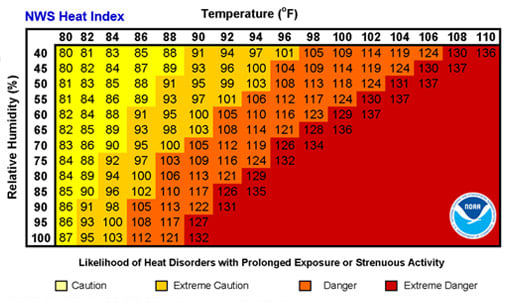Claim Center
We're in the business of helping people, providing prompt and personal claims service when you need us the most.
Call 877-242-2544 anytime, day or night, to report claims. You may also contact your independent agent to report a claim.
- Personal & Business ClaimsLearn More
- Life ClaimsLearn More
- Workers' Compensation ClaimsLearn More
Plan & Protect
Reduce risks and enjoy peace of mind with these tips and insights to protect what matters most.
Heat Stress: Don't Underestimate the Danger

Take precautions to avoid heat stress during extremely hot or humid weather.
Heat is a leading weather-related killer, according to the National Weather Service, and those who work or spend time outdoors should consider strategies to avoid heat-related illnesses.
Extremely hot and humid weather makes it difficult for the body to regulate itself, and those who expect to be outdoors for personal or business activities should take precautions to avoid heat stress. Heat-related illnesses can range from heat cramps to heat exhaustion and heat stroke, which is a serious health emergency.
Infants and children, the elderly and people with certain chronic health conditions or who take certain prescription medications are at greater risk from heat stress. Construction workers and others who must work in hot environments should take extra precautions, especially if they are required to wear heavy protective clothing on the job.
Signs of Heat Exhaustion

Heat Exhaustion
If you are working or playing outdoors, monitor for signs of heat exhaustion, which can lead to heat stroke:
- Heavy Sweating
- Paleness
- Muscle cramps
- Tiredness
- Weakness
- Dizziness
- Headache
- Nausea or vomiting
- Fainting
- Skin: may be cool and moist
- Pulse rate: fast and weak
- Breathing: fast and shallow
Protect Yourself
- Drink cool, nonalcoholic beverages. If you take medications or are on a liquid-restricted diet, ask your doctor for advice. Avoid extremely cold liquids that can cause cramps.
- Rest.
- Take a cool shower, bath or sponge bath.
- If possible, seek an air-conditioned environment. If you don’t have air conditioning, consider visiting an air-conditioned public building or public library to cool off; some communities open cooling shelters when the heat index reaches a specified level.
- Wear lightweight clothing.
- If possible, remain indoors in the heat of the day.
- Do not engage in strenuous activities.
For Workers
For those who must work outdoors in the heat, employers should consider:
- Adjust work schedules; perform work during cooler hours of the day (early morning or evening) if possible.
- Mandate work slowdowns as needed.
- Rotate personnel: alternate job functions to minimize overstress or overexertion at one task.
- Provide shelter – air-conditioned, if possible – or shaded areas as a respite area for employees.
- Maintain workers’ body fluids at normal levels.
The Occupational Safety and Health Administration offers a free app for iPhone and Android smartphones to help assess when the heat index requires you to take protective action. Find them in the app store for your device.
The app allows workers and supervisors to calculate the heat index for their worksite and based on the heat index, displays a risk level to outdoor workers. With a simple “click,” you can get reminders about the protective measures that should be taken to protect workers from heat-related illness, for example, reminders to drink enough fluids, schedule rest breaks, plan for what to do in an emergency, adjust work operations, build up the workload gradually for new workers, train workers on heat illness signs and symptoms and monitor each other for signs and symptoms of heat-related illness.
More information is available from OSHA.
This loss control information is advisory only. The author assumes no responsibility for management or control of loss control activities. Not all exposures are identified in this article. Contact your local, independent insurance agent for coverage advice and policy service.